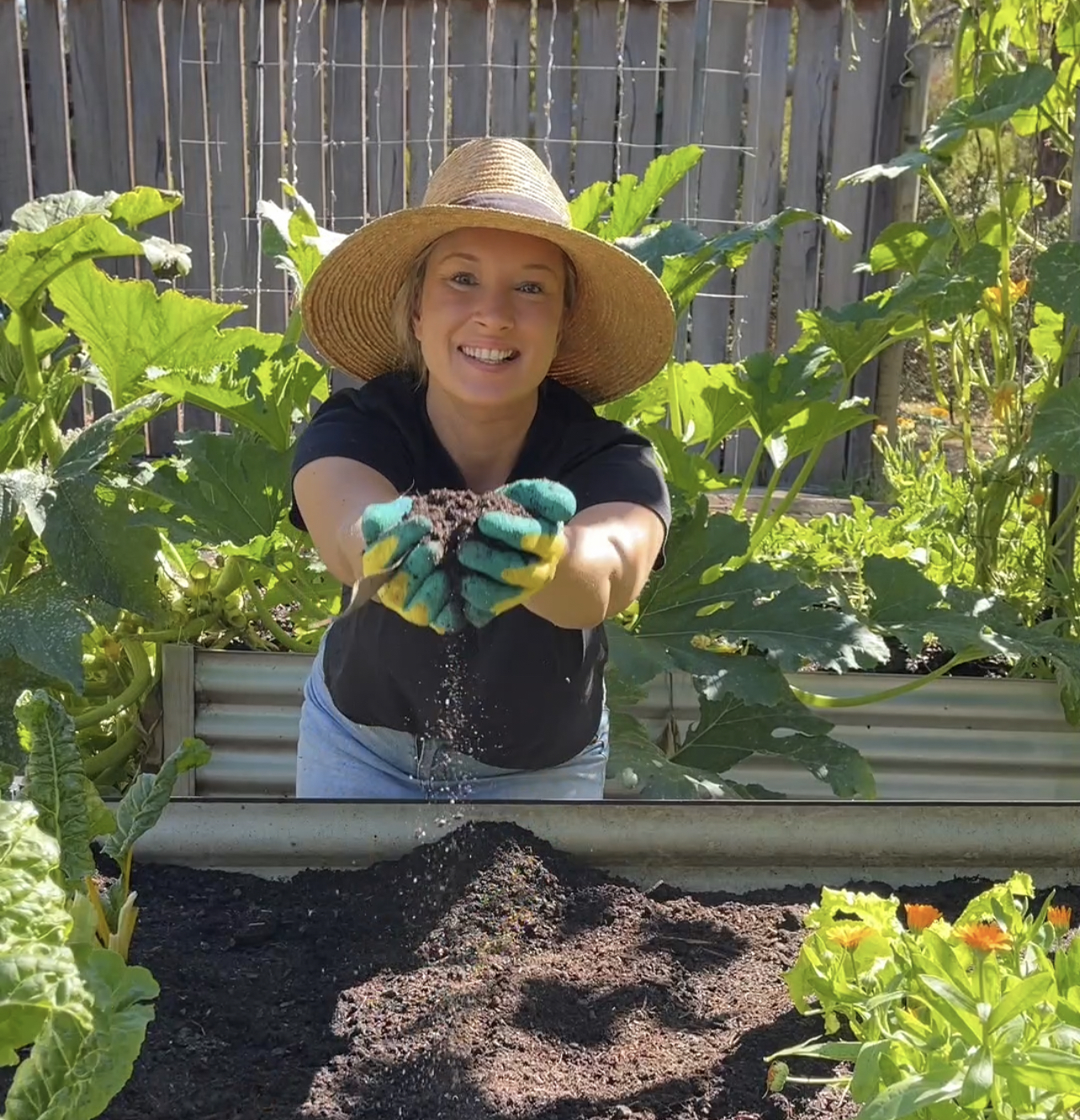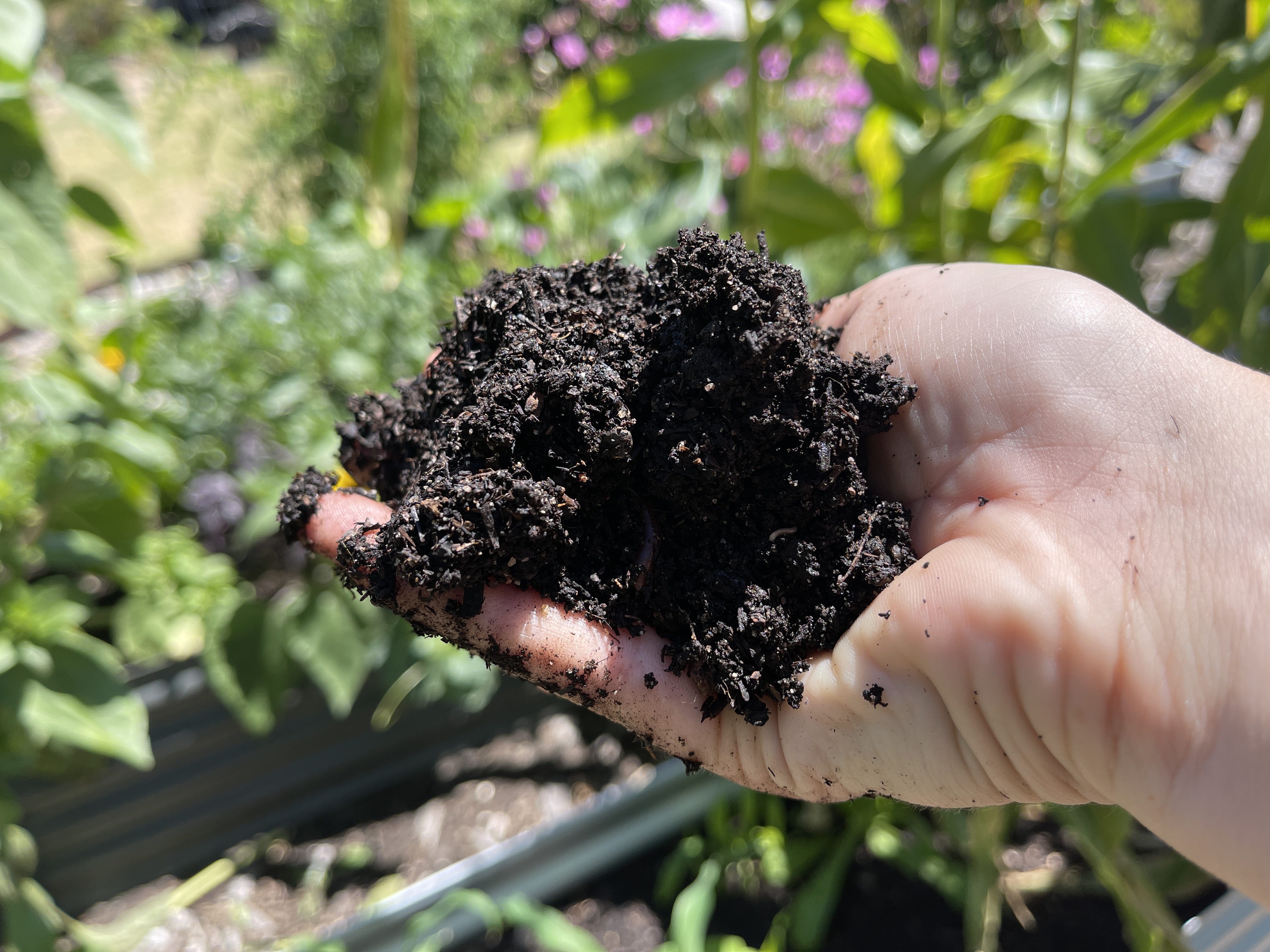
How to Start Compost
Feb 08, 2023Compost is an absolute MUST-have in my veggie garden and the best thing is it’s free while also being a great way to reduce, reuse and recycle your waste at home while feeding your plants!
When I first started gardening, I really didn't understand what compost was, let alone how to make it or what to do with it! So I hope these simple insights are helpful to beginners just starting out.
What is Compost?
Compost is basically a broken-down mixture of green waste (like veggie scraps) and brown waste (like paper and dry leaves) once broken down it creates a soil medium rich in nutrients for your garden. Composting also diverts so much food waste from landfill and turns it into something helpful for the environment.

What CAN I compost?
I keep it simple. I mainly compost my household veggie and fruit scraps, garden waste and I often compost shredded paper from work. It's important to compost a good balance of Green waste (like veggie scraps) and Brown waste (carbon) to balance your compost.
Here’s a list of the most common things I compost: (G= Green Waste B= Brown Waste)
Veggie scraps (G)
Fruit scraps (G)
Green garden waste (ie things that are still green and alive (G)
Cardboard (B)
Eggshells (B)
Shredded Paper (B)
Coffee grinds (G)
Dry Leaves (B)
Small sticks (B)
Toilet rolls (B)
Wood ash from the Fire (Untreated) (B)
So What DON'T I compost?
I don’t add meat, meat products, diseased plants, oils or any food in an unnatural state. Although meat is compostable as a Bokashi system I don't use the Bokashi method at this stage. I am just composting the basics. When adding materials to your compost, I always like to ensure If I add green waste, I add some brown waste too, so that it is easy to keep in balance. It's handy to always have a stash of brown waste on hand.
What do I use to make it?
I like to use compost Tumblers and an insitu compost bin that sits directly on the ground or in my garden beds directly. Compost can attract rodents, so my preference is to use the compost tumblers because they are fully enclosed and rodent proof. I use the 220 Litre Tumblers and I have two of them.

How do I set it up?
The lazy way - Cold composting - In a tumbler
If you just want to start with the least amount of fuss then do this.
- Add 1/3 of your brown waste (dry stuff / carbon)
- Add 1/3 of your green waste
- Add a handful of manure or healthy garden soil
- Add remaining brown waste and green waste in layers
- Add another handful of manure
- Give it a quick hose through for moisture
- Close the lid and turn it a few times.
- add to it as you have scraps - but ensure its always balanced with more brown waste than green and turn it for air every time you add scraps.
The dedicated way - Hot composting - on the ground
- fill one-third of the bin entirely with brown waste (compost bedding block, dry leaves, mulch, small sticks)
- Add a few good scoops of manure - pelleted chook poo would be great
- Add some garden soil
- Then layer the entire compost to the top, alternating green waste and brown waste.
- Hose it down for moister
- cover the top with a hessian bag or compost blanket
- Aerate the compost by turning it over (I use an aerator tool) at least twice per week.
How long will it take?
It depends how you are making your compost. You can cold compost or hot compost.
If you are cold composting (which is putting a little in the bin at a time or as you have kitchen scraps available) your compost may take around 12 months to break down. If you are hot composting (filling your bin up at one time with balance and airing it regularly) your compost may break down and be ready in around 2-3 months if it is a well-balanced hot compost.
I tend to cold compost, mainly because I am lazy and also don't like to have bulk scraps sitting around the place until I have enough to fill a bin. I tend to mainly just throw scraps into my composters every couple of days. It's definitely the lazier way to compost. Hot composting is much faster in the long run and I will try to be more proactive with this.
What can go wrong?
If compost isn’t well balanced it can cause the bin to smell and the food will rot instead of composting down. This is why it is important to keep a healthy balance of green and brown waste. If you add too much green waste, without the balance of brown waste the bin can turn soggy and slimy.
If the bin is unbalanced you can get an influx of insects or the compost might not heat up and break down as it should. Don't worry if this happens, you can just add more dry brown waste to help balance it out. Dry leaves work the best in my experience. You might be surprised how quickly you can improve your compost just by adding lots of dry leaves!

What will help?
Aeration - Compost needs regular turning to get aeration to it. I usually turn it twice a week or when I put new scraps in it. If I'm hot composting, turning the pile to get air into it a couple of times a week will help it along.
Moisture - I ensure my compost is moist but not too wet. In summer I run the hose through the compost about once per fortnight to keep the moisture up. In winter often compost can become soggy, so you may need additional dry brown waste to balance it instead.
Balance – A good ratio of green waste and brown waste. I do a minimum 50/50 split between browns and greens, however more brown than green is ideal. And if you are hot composting aim for 2/3 brown waste 1/3 green.
When do I know it’s ready?
You’ll know your compost is ready when it smells earthy (It shouldn't smell bad) and it resembles a dark soil. There shouldn’t be food present (although you may still find eggshells- they take a long time to break down) The matter in the bin will have “shrunk” in volume. If I fill my compost to the top, it will actually breakdown to be about 1/3 of the original volume once it is finished breaking down.
How to Collect it?
I like to use a tarp and I lay it beneath the tumbler. I push the tarp right under and between the legs of the composter. Take a lid off and then slowly tip it out. It’s important not to tip it instantly into a vertical position or the compost will get stuck in the hole. I just rock it back and forth to help the compost out. It's so easy!
If your composting on the ground rather than a tumbler, you can simply lift the edges of the compost bin up with a spade and pull the bin off.
How do I use it?

I use it to top up my existing beds and use the compost like a mulch on my veggie garden beds. If I am setting up a new bed, I mix in a couple of wheelbarrow loads into a garden bed and lightly mix in with the other soil before I plant my plants. You can also make compost tea. I personally don’t bother because I like to keep things simple and easy in my garden.
I hope these simple tips help you to get started or answer some of the beginner compost questions you might have had!
Happy Gardening,
Sarah

